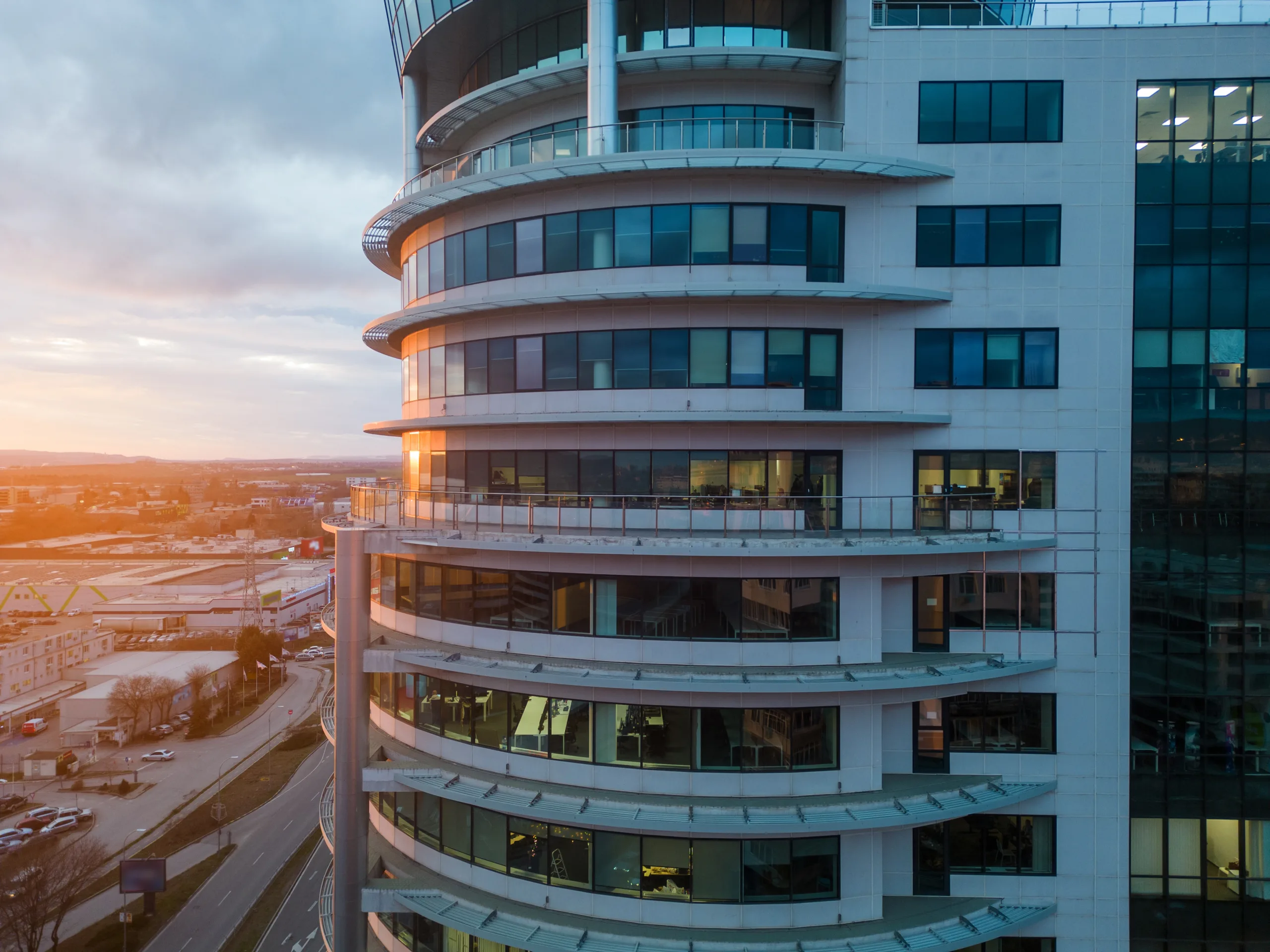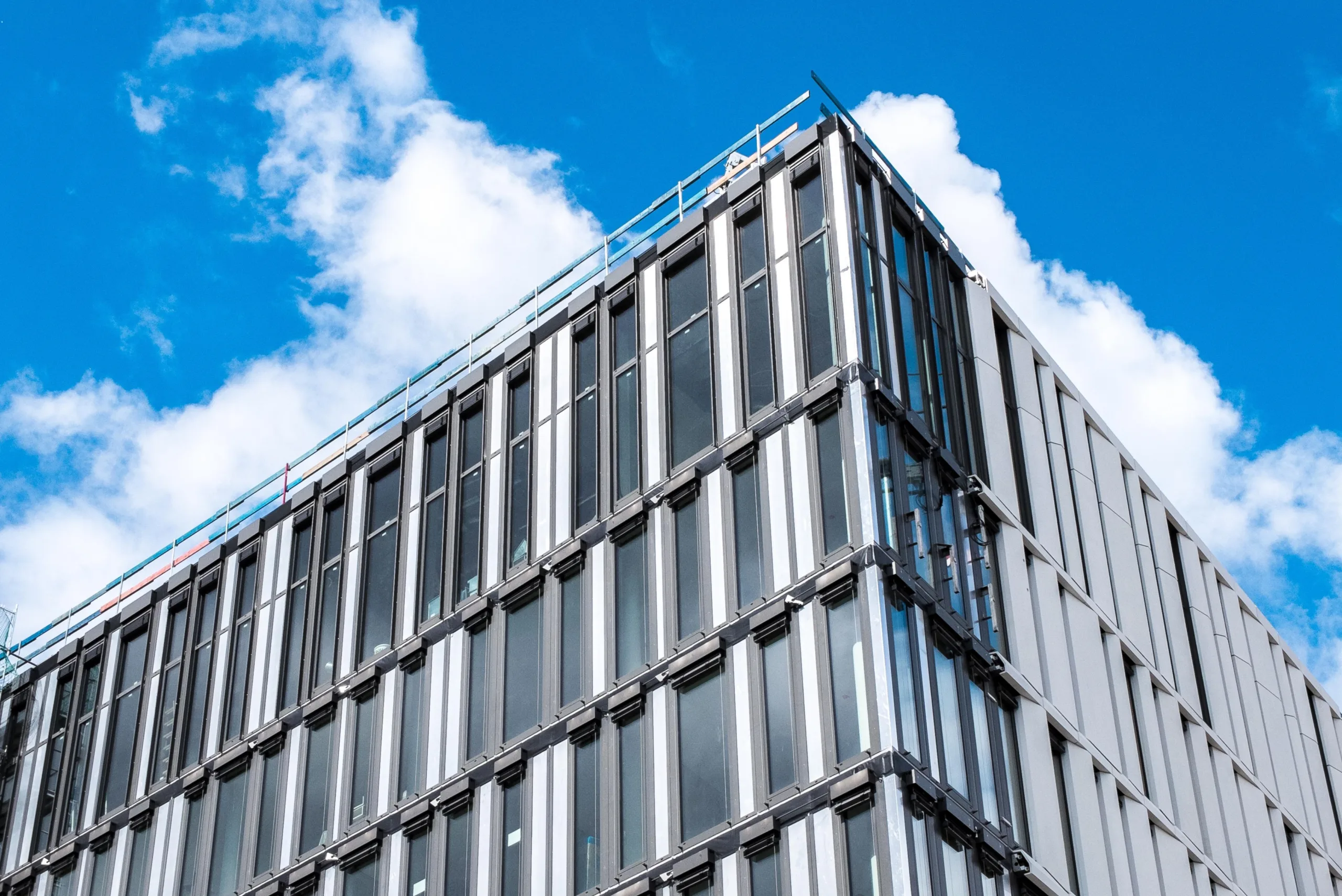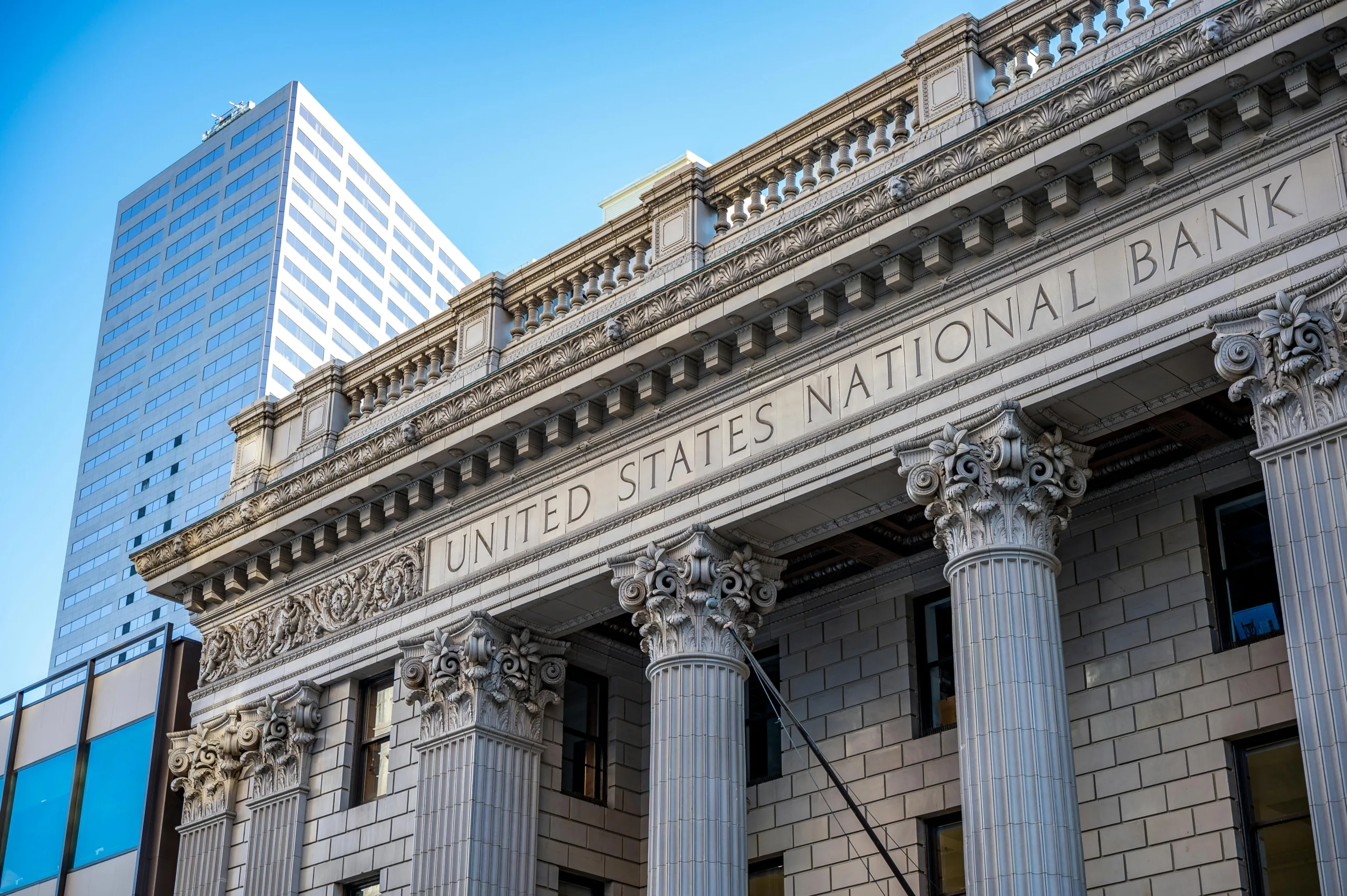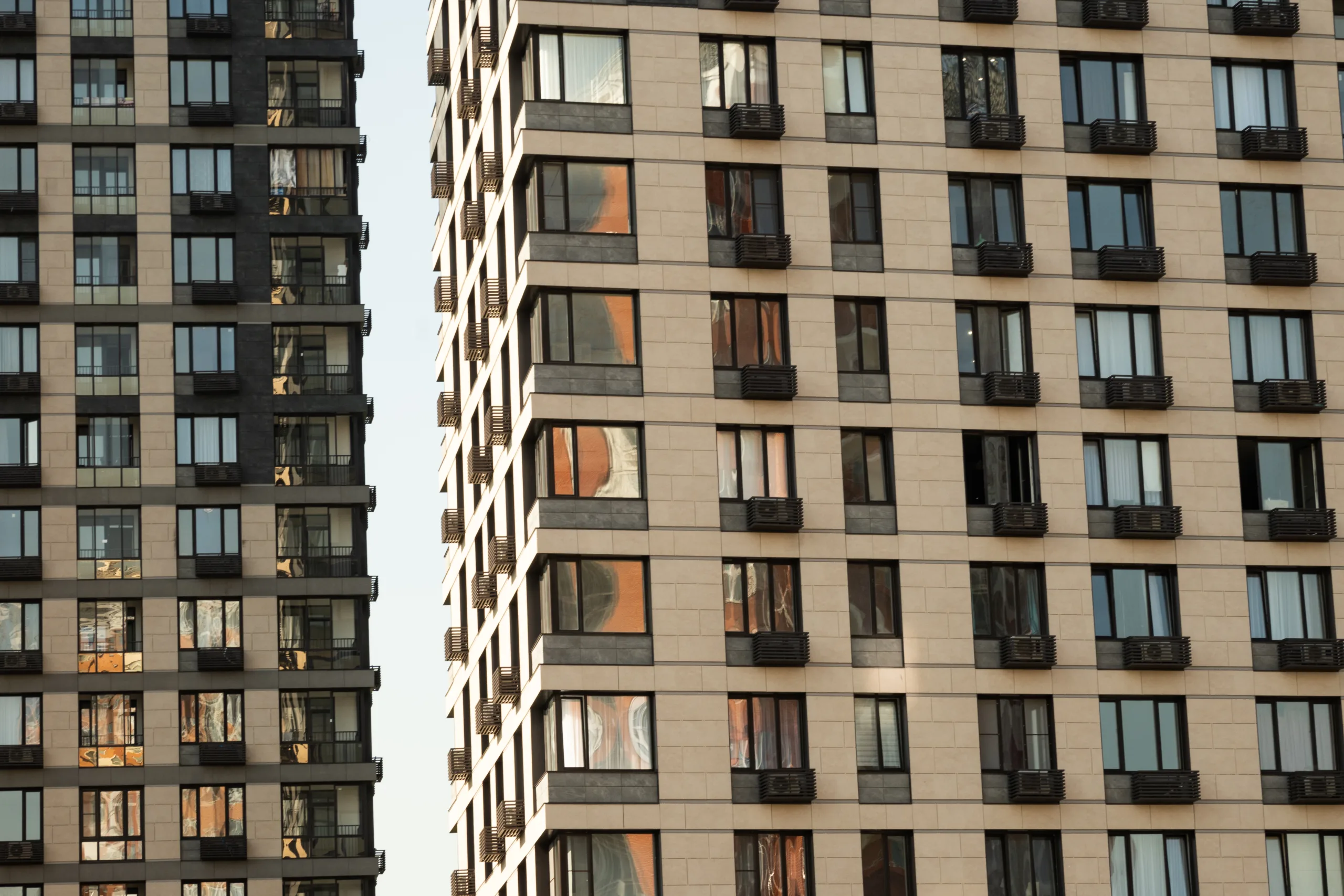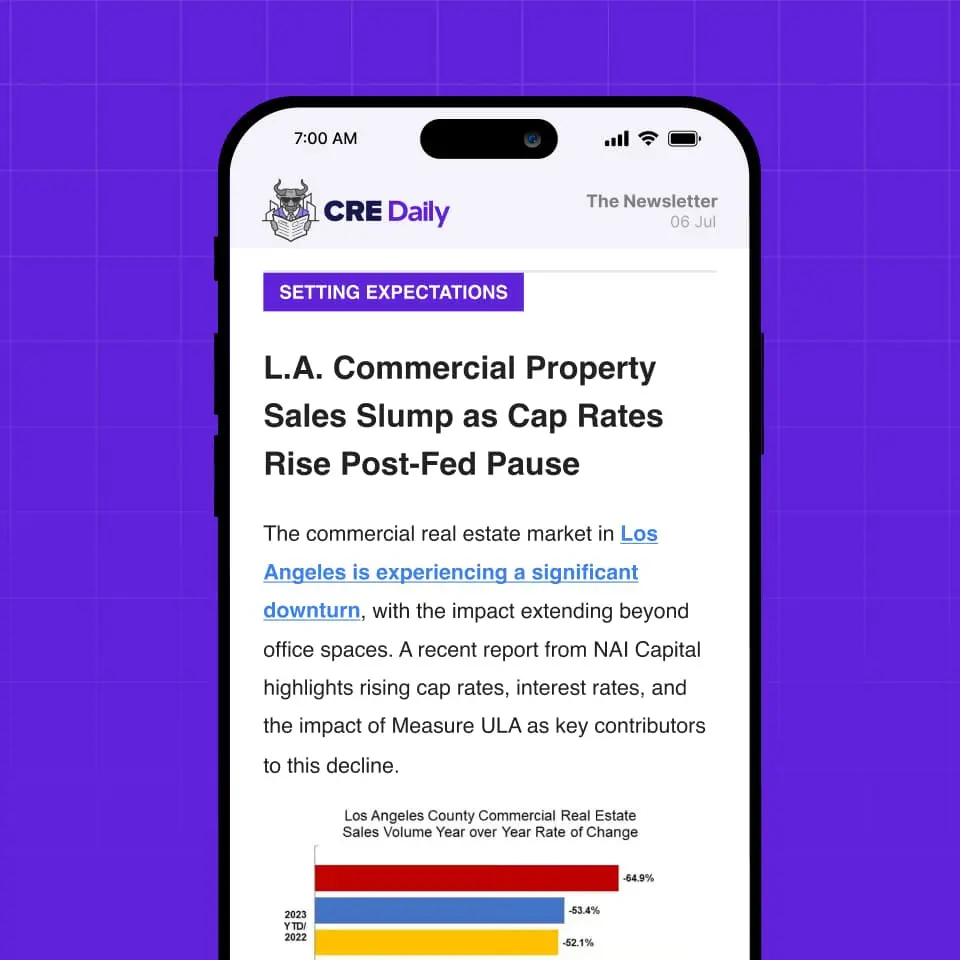Distress Deepens in the Office Market, But Opportunity Knocks
Trepp flagged 279 distressed office loans totaling $9.02B, all tied to properties with 60% or lower occupancy.
Good morning. The office market may finally be hitting its true reset. Trepp’s latest report highlights where $9B in distressed loans are piling up, and why now could be the moment for investors to strike.
Today’s issue is sponsored by Agora—learn how to scale investor relations, streamline workflows, and enhance engagement—all with less overhead.
💻 Join CRE Daily + JBREC for a free webinar TODAY, breaking down the 2Q25 Fear and Greed Survey. We’ll unpack what’s driving investor sentiment, where capital’s flowing, and what to watch next.
Market Snapshot
|
|
||||
|
|
*Data as of 06/25/2025 market close.
Time to Buy
Distress Deepens in the Office Market, But Opportunity Knocks
According to Trepp, the office market’s reset is underway, and now may be the prime time for opportunistic investors to act.
Flashing signals: Trepp has flagged 279 U.S. office loans tied to properties with occupancy below 60%, representing $9.02B in total loan balances. Over half (52%) have a debt service coverage ratio (DSCR) under 0.89x, indicating severe cash flow issues. Many of these assets face refinancing hurdles as maturities approach between 2025 and 2027—just as interest rates remain stubbornly high and property values lag.
Two-tiered market: The office market is diverging: while Class A buildings in strong markets continue to attract capital, older assets—often pre-1940 or from the 1971–1990 era—are increasingly stuck. These outdated properties, which make up nearly 75% of the distressed sample, struggle with both occupancy and functional obsolescence, often requiring significant investment to reposition.

Refi crunch: Today’s interest rates for new CMBS office loans range from 6.75% to 7.75%, with some deals nearing 14%. That’s a stark contrast to the sub-5% rates on many distressed loans. The math simply doesn’t work for many borrowers, especially when occupancy is low and valuations are compressed. More than 70% of the distressed loans fall short of the 1.25x DSCR threshold typically required to refinance.
The maturity wall: The office loan maturity wall is fast approaching, with a significant portion coming due in 2025–2027. Lenders have fewer incentives now to “extend and pretend.” Without meaningful interest rate relief or fresh capital from borrowers, many of these loans could slide further into default, pushing lenders to offload troubled assets rather than renegotiate.
Zoom in: The largest concentrations of distressed assets are in major metros like New York, Los Angeles, San Francisco, and Chicago—home to nearly $2.4B in potentially distressed loans. While newer, well-located Class A buildings may remain stable, older product in these cities is under acute pressure. Notably, if the occupancy threshold for distress were raised to 75%, the size of the distress pool would nearly triple to over $26.3B.
➥ THE TAKEAWAY
Buying into distress: After years of anticipation, distress in the office sector is now more than theoretical. With a growing backlog of underperforming loans, higher rates, and a shrinking margin for refinancing, opportunistic investors finally have a sizable pipeline to explore—particularly in gateway markets with structurally challenged older assets.
TOGETHER WITH AGORA
Exclusive webinar: How leading IR teams scale smarter
Investor relations teams are under pressure to do more with less. The most successful firms are streamlining day-to-day operations and delivering personalized investor experiences—without increasing overhead.
Watch our expert-led webinar, How leading IR teams scale smarter: Modern approaches for mastering investor relations with confidence, and discover how top teams:
-
Streamline fundraising and onboarding
-
Elevate the investor experience
-
Unify the distribution process
-
Leverage technology to scale operations
Learn from real-world success stories and take the first step toward modernizing your investor relations strategy.
*This is a paid advertisement. Please see the full disclosure at the bottom of the newsletter.
✍️ Editor’s Picks
-
Industrial evolution: Co-warehousing is gaining traction as businesses seek smaller, flexible spaces in response to shifting logistics and cost pressures. (sponsored)
-
Data duel: A federal appeals court revived CREXi’s antitrust case against CoStar, ruling the real estate giant may have unlawfully used its market dominance to block competition.
-
Water rising: More homeowners in pandemic boomtowns are now underwater on their mortgages, as post-peak price drops and high-rate loans leave recent buyers stuck.
-
Rate uncertainty: Fed officials remain divided on when to cut interest rates, with tariff fears clouding inflation forecasts and potentially pushing a move back to September.
-
Lease violations: Greystar will pay $1.4M to settle DOJ claims it illegally charged early termination fees to military tenants despite protections under federal law.
-
Pension pivot: Public pension funds are increasingly turning to CRE and infrastructure investments as they move beyond low-yield fixed-income strategies.
🏘️ MULTIFAMILY
-
Multifamily momentum: Yardi’s Summer 2025 report shows strong renter demand meeting high supply, but deal flow remains slow amid rate uncertainty.
-
Leasing boom: Tulsa’s multifamily market is booming as low construction activity and strong leasing push occupancy to 95.1% and rents to record highs.
-
Buying spree: MG Properties continues its acquisition streak with a $144M purchase of Anaheim’s Citron Apartments.
-
Portfolio shuffle: Camden sold a 337-unit Houston complex as part of a $750M plan to trade aging assets for higher-growth properties.
-
Austin distress: A $110M CMBS loan on two Austin apartment complexes has gone to special servicing after falling delinquent.
🏭 Industrial
-
Airport upgrade: JFK’s $9.6B Terminal One project will include an 84K SF logistics hub aimed at streamlining deliveries and reducing traffic.
-
Vacancy crunch: AI-driven demand from hyperscalers and cloud providers pushed global data center vacancy to a record-low 6.6% in Q125.
-
Refi boost: TA Realty secured $52M to refinance its nearly 1M SF Carter Park Distribution Center in Fort Worth.
🏬 RETAIL
-
Consumer pivot: Retail real estate is rapidly evolving as consumer preferences shift toward wellness, smaller store formats, and tech-enabled experiences.
-
Private investment: Wealthy US retail investors have helped push semi-liquid private fund assets to $350B, up 60% since 2022.
-
Rural reach: Amazon is investing $4B+ to bring faster delivery to 4,000 rural U.S. communities by year-end.
-
Factory direct: Target is piloting a Temu-style factory-to-door shipping model to boost low-cost offerings and revive slumping sales.
🏢 OFFICE
-
Adaptive reuse: Office-to-resi conversions are on the rise as more cities roll out incentives to repurpose underused buildings.
-
Tech growth: Tech office leasing is rebounding nationwide, with AI-fueled demand driving activity in major and emerging markets
-
Green leaders: Washington, DC, San Francisco, and Boston top the list of US markets with the most sustainable office space.
-
Legal troubles: Notorious landlord Steve Croman is facing a $900K lawsuit for unpaid office rent at 740 Broadway, adding to a string of legal and financial problems.
-
Spec rebound: With prime office space shrinking and demand for top-tier buildings rising, developers are eyeing speculative construction by 2027.
🏨 HOSPITALITY
-
World Cup prep: Dallas leads the U.S. in hotel construction with 203 projects underway or planned, fueling a nearly 25% supply boost ahead of the 2026 World Cup.
-
Wynwood arrival: Argentina’s famed Presidente Bar debuts in Miami’s Wynwood with craft cocktails, bold design, and a hidden speakeasy.
-
Strategic shift: Aimbridge Hospitality is refocusing on hotel quality and long-term partnerships following its recapitalization and overhaul of its ownership structure.
A MESSAGE FROM CRE DAILY + JBREC
Commercial Real Estate Market Update – 2Q25 Fear and Greed Survey Results
Join us as we walk through the results of our 2Q25 Fear and Greed Survey, conducted by CRE Daily and John Burns Research and Consulting (JBREC).
In this 30-minute webinar, we’ll unpack the most timely trends across Multifamily, Industrial, Retail, and Office sectors, including:
-
How CRE investors expect tariffs to impact their businesses
-
CRE investors’ outlook for US manufacturing
-
Shifts in foreign direct investment in commercial real estate
-
Capital market conditions
*This is a paid advertisement. Please see the full disclosure at the bottom of the newsletter.
📈 CHART OF THE DAY

US residential building permits declined for the fourth straight month in April 2025, with single-family permits down 4.7% YoY and multifamily permits slipping 1.5%, signaling a broader construction cooldown.

You currently have 0 referrals, only 1 away from receiving Multifamily Stress Test Model.
What did you think of today's newsletter? |
